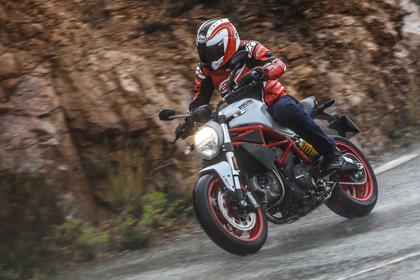How to brake in the wet
While a lot of modern bikes come with ABS, not every new rider can afford a brand new machine and that means you need to learn to get the best out of your brakes – especially in the wet. So here is MCN’s five-point plan to practicing perfect wet weather braking.
1. Find a safe space
Locate a clear, well-surfaced area that is traffic-free. A car park is a good spot, just be careful of any white lines, especially if they are damp. Wet paint on any surface can offer next to no grip and you will be on your ear before you have time to react.
2. Smoothness is key
As with any skill, smoothness is key to getting the best from your brakes. If you grab them hard you run a far greater risk of locking up the front or rear wheel. Start building up the pressure slowly to force the tyre into the tarmac and then increase the pressure to maximise your stopping.
have passed your test, build up your experience with lots of short trips so that you don’t lose concentration through fatigue when you do attempt that longer ride.
More new rider hints and tips
- Video: Young riders shown the real cost of not wearing protective gear
- Essential advice for new riders
- Crafty tips to perfect overtakes
- Video: The CBT explained
3. Build up slowly
Focus on the front brake and gradually build up pressure so that you understand just how much effort it requires and how much braking performance you have got. You should also start to develop a feeling for what the front tyre is telling you, now is the time to listen very carefully to the messages it is sending you.
4. Get ready to skid
At the point just before a tyres skids it loses speed rapidly and there is a definite feeling of it about to ‘let go.’ Feel for this and when you get the sensation of the front losing grip, release the brake lever to allow it to recover. It may sound drastic, but if you build up to this gently you will soon discover that there is actually quite a large point when the tyres skids and recovering is easy and soon becomes instinctive.
5. Now focus on the rear
Skidding the rear is far easier than the front due to the bike’s weight bias. And it is also far less concerning as we have all grown up skidding bicycles! As with the front, build up slowly and feel for that point when the tyre is about to skid and then release the brake to allow it to recover.


